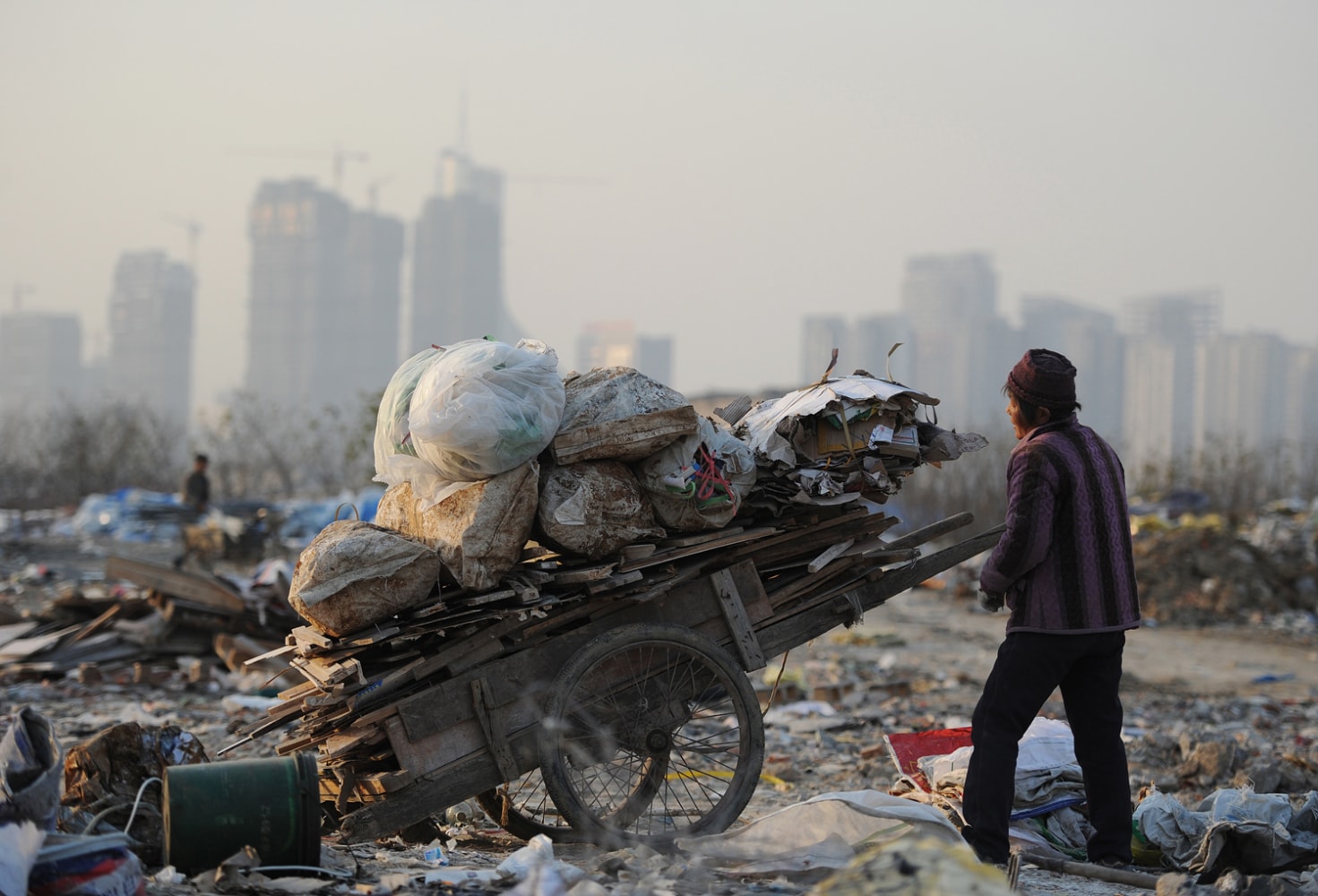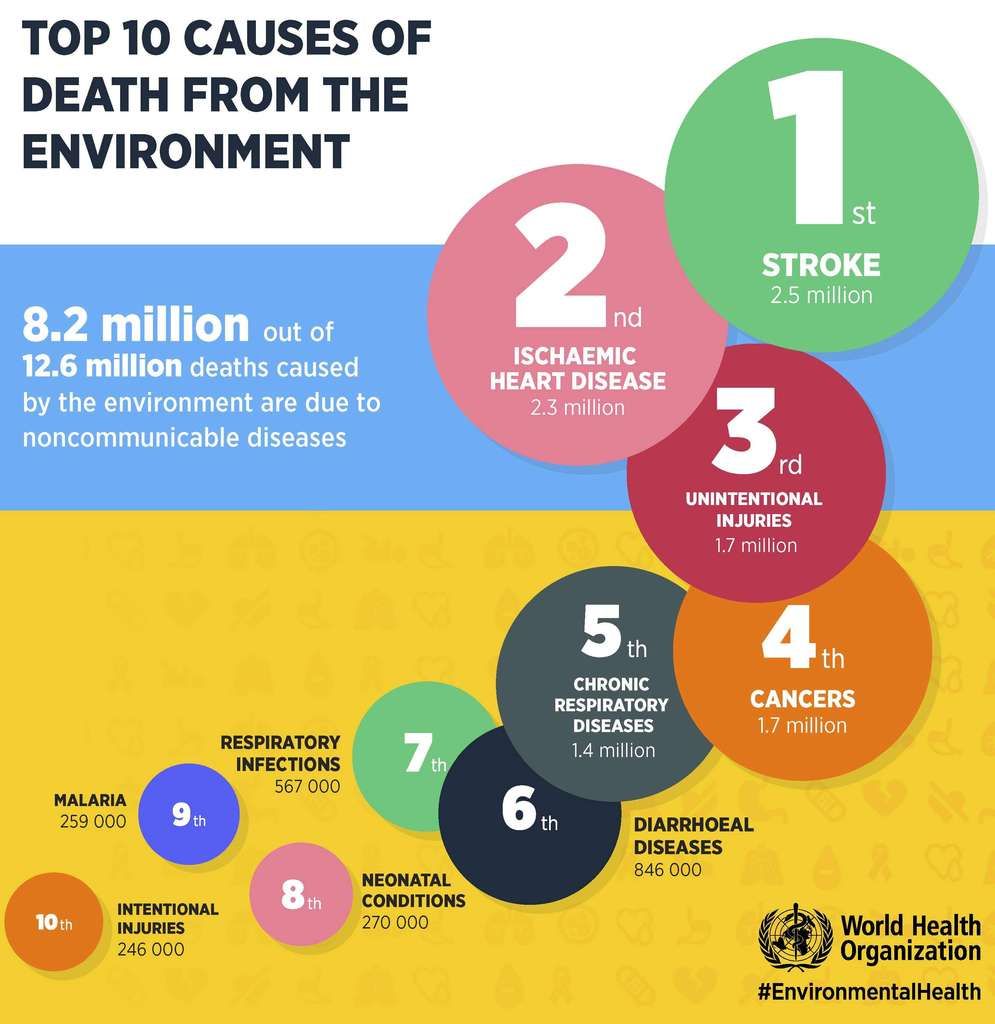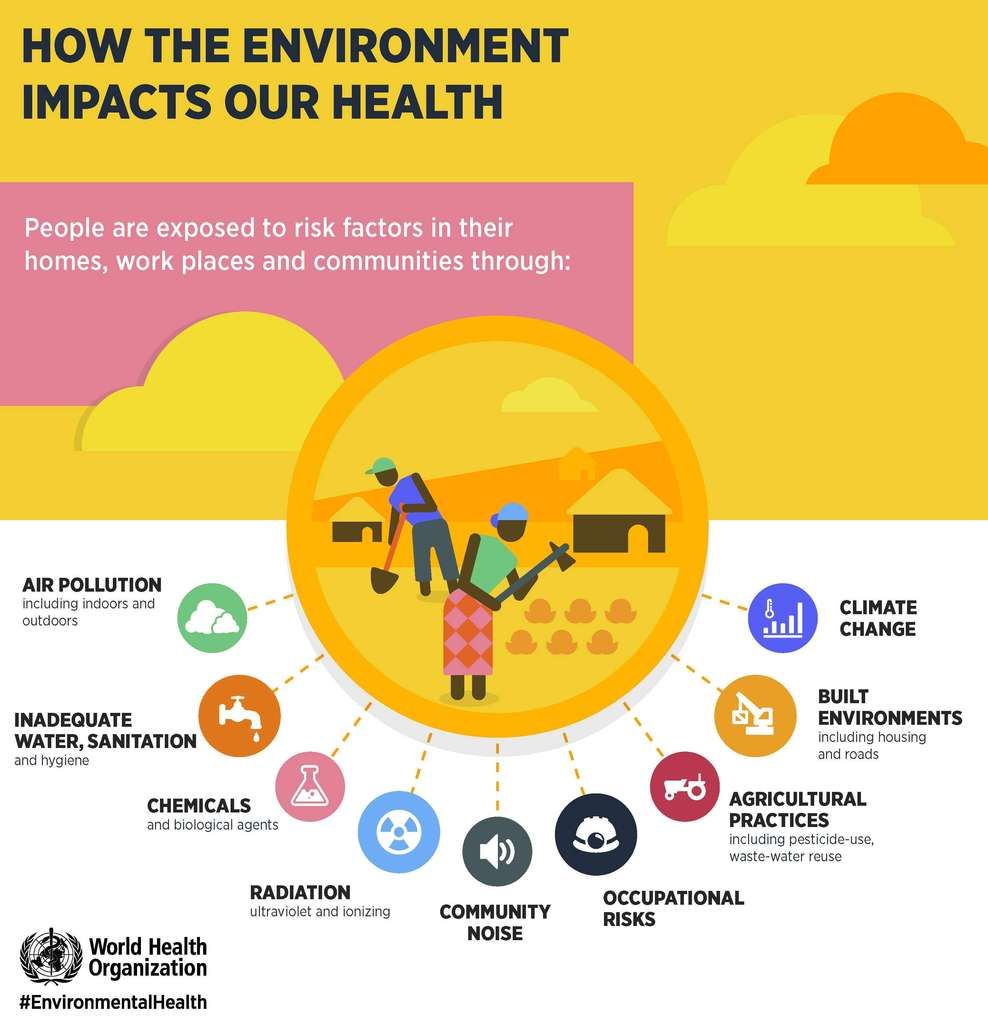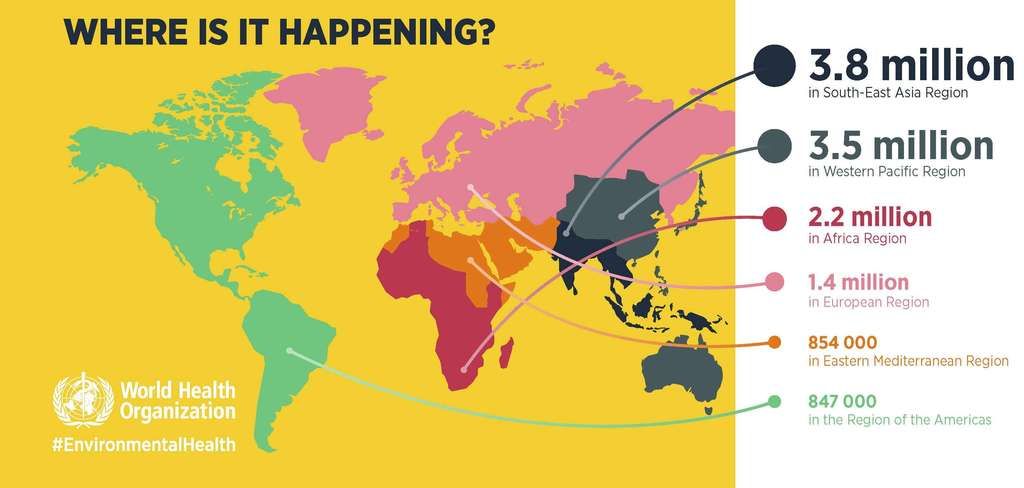The Toxification, Sickening of our Planet
Published on March 22nd, 2016
Environmental contamination causes 1 in 4 deaths worldwide.
A report released on March 15 by the World Health Organization (WHO) finds that nearly 1 in 4 deaths worldwide is from exposure to toxins in the environment.
WHO estimates that 12.6 million people died from living and/or working in an unhealthy environment in 2012. This accounted for 23 percent (1 in 4) of total global deaths in that year. Environmental risk factors, including air, water and soil pollution, chemical contamination, climate change, and ultraviolet radiation, cause or aggravate more than 100 diseases and injuries.
 |
| Source: WHO |
 |
|
As the amount of garbage, industrial wastes and toxic substances soars worldwide, more and more people
are exposed to unhealthy environments.
|
The report, entitled “Preventing disease through healthy environments: a global assessment of the burden of disease from environmental risks,” reveals that deaths from noncommunicable diseases (NCDs), mostly attributable to air pollution (including exposure to second-hand tobacco smoke), account for up to 8.2 million of these deaths. NCDs – such as heart disease, stroke, cancers and chronic respiratory disease – now account for nearly two-thirds of the aggregate mortality caused by unhealthy environments.
At the same time, deaths from infectious, communicable diseases, such as diarrhea, dysentery, cholera and malaria, often related to contaminated water, poor sanitation and improper waste management, have decreased. This decline is attributable to improved access to safe water and better sanitation, as well as greater availability of vaccines, medicines and antibiotics, and insecticide-treated mosquito nets.
According to the WHO report, environmental exposure to contamination disproportionately impacts the young and the elderly. Children under age 5 and adults from 50 to 75 are the most affected. WHO estimates that the deaths of 1.7 million children under 5 and nearly 5 million adults age 50 to 75 could be prevented through better environmental management. Lower respiratory infections and diarrheal diseases have the greatest impact on children under 5, while older people are most harmed by NCDs.

 As evident from the map, deaths from exposure to unhealthy environments are more prevalent in poorer, industrializing regions rather than the wealthier, already developed regions of the world, such as the United States. Most of these regions also suffer from overpopulation, rapid population growth, congestion and overcrowding, which intensify exposure to unhygienic and toxic conditions.
As evident from the map, deaths from exposure to unhealthy environments are more prevalent in poorer, industrializing regions rather than the wealthier, already developed regions of the world, such as the United States. Most of these regions also suffer from overpopulation, rapid population growth, congestion and overcrowding, which intensify exposure to unhygienic and toxic conditions.
WHO cites a number of “proven strategies for improving the environment and preventing diseases.”
Among these are using cleaner technologies and fuels for domestic cooking, heating and lighting. These would reduce acute respiratory infections, chronic respiratory diseases, cardiovascular diseases and burns.
 |
| Image from Global Population Speak Out: promoting sex education and reproductive health. https://www.youtube.com/watch?v=NB6_WsI2YrQ |
Further improving access to uncontaminated potable water and adequate sanitation, as well as the promotion of hand washing, would continue to reduce sickness and mortality from diarrhea and related gastrointestinal diseases.
Tobacco smoke-free laws, regulations and ordinances lessen exposure to second-hand tobacco smoke, thus reducing cardiovascular diseases and respiratory infections. Improving urban transportation and urban planning, and building energy-efficient housing and buildings, would reduce air pollution-related diseases and promote safe physical activity.
One key strategy WHO leaves out of its report is slowing population growth via the promotion of family planning services, reproductive health and sex education, access to contraceptives, and greater educational and employment opportunities for girls and women.
If the world’s population weren’t growing by 80 million a year (more than 220,000 net every day!) the problem of exposure to sick environments would be far more manageable. And perhaps even solvable. Now there’s a thought!




